Growing your own vegetables at home is fun and exciting. You enjoy fresh and healthy veggies from your garden. But you must provide them with all the requirements in proper amounts. For Zucchinis, water is one of the most critical requirements.
Zucchini plants grow best when their soil is consistently moist and not wet. Always give them 1 inch of water per week when the plant grows. Water the plant whenever the top few inches have dried. For consistently moist soil, consider long soakings. The soil should be kept moist but not waterlogged.
This is just brief information. If you are curious about the water requirements for Zucchini plants, read this article until the end as we explore the right water amounts and factors to consider while watering.
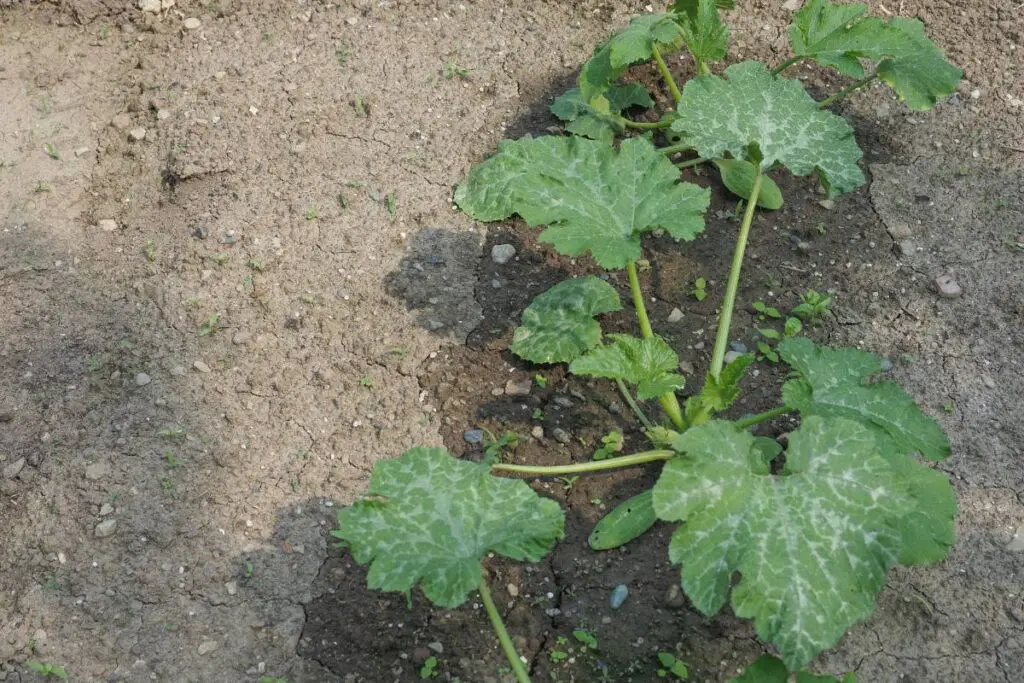
Understanding the water needs of the Zucchini plants
Watering the Zucchini plants is a vital care tip for healthy and green plants full of fruits and flowers.
Generally, the Zucchini plants must be watered every 1-2 weeks with 1 inch of water.
The watering frequency and amount will depend mainly on the weather conditions of your area.
When the weather is too hot, increase the frequency to 2-3 weeks.
During the rains, you can reduce the watering.
In winter, water them every 3-4 weeks.
The best way to water the plant is to check the soil’s moisture level before watering.
Insert your finger 1 inch deep into the soil to feel the moisture.
If the top few inches feel dry, you can water the plant.
Otherwise, wait some time to let the top few inches dry out.
The bottom few inches should always remain moist to prevent the roots and the plant from dehydrating.
When watering the plant, provide a deep and thorough soaking so that the moisture reaches the plant roots to absorb and use it correctly.
It is also important to water the plant at the right time of the day, mainly in the early morning when it has some dew drops.
The plants can absorb all the water you provide better in the early morning.
Water evaporates under the hot sun during the day, which is not the case in the early morning.
It is important to note that overwatering and underwatering will kill your plant.
Zucchinis are water-loving plants, and keeping the dehydrated for too long can kill them.
At the same time, too much water can lead to root rot, killing the plant.
Keep reading the article till the end as we explore every detail about watering of the Zucchini plants.
Exploring the importance of Water for the Zucchini plants
Watering all the plants is essential for their overall growth and development, and Zucchinis are no exception.
Watering the Zucchini plants makes them strong and healthy, encouraging them to grow faster with lots of flowers, seeds, and fruits.
When you water the Zucchini plants very well, it becomes easier for the plant to transfer the nutrients from the roots to the plants.
As a result, the plant responds well and thrives.
Water helps in good photosynthesis of the plant, which further encourages plenty of fruit production.
Water gets transported from the roots to the leaves through the vascular system, where photosynthesis occurs.
Water is a raw material for photosynthesis that gives the necessary hydrogen atoms and electrons for the process.
Water also acts as a natural coolant for the Zucchini plants.
It keeps the plant cool and prevents overheating, especially during the hot summers.
Watering the Zucchini plants every day or twice a day is unnecessary unless your region receives too hot weather.
The Zucchini plants can do better if they receive less water as long as the soil remains moist at a few inches at the bottom.
Water the plant only when the top few inches have dried out.
Do not let the soil dry out completely between the watering sessions.
Finding the right balance
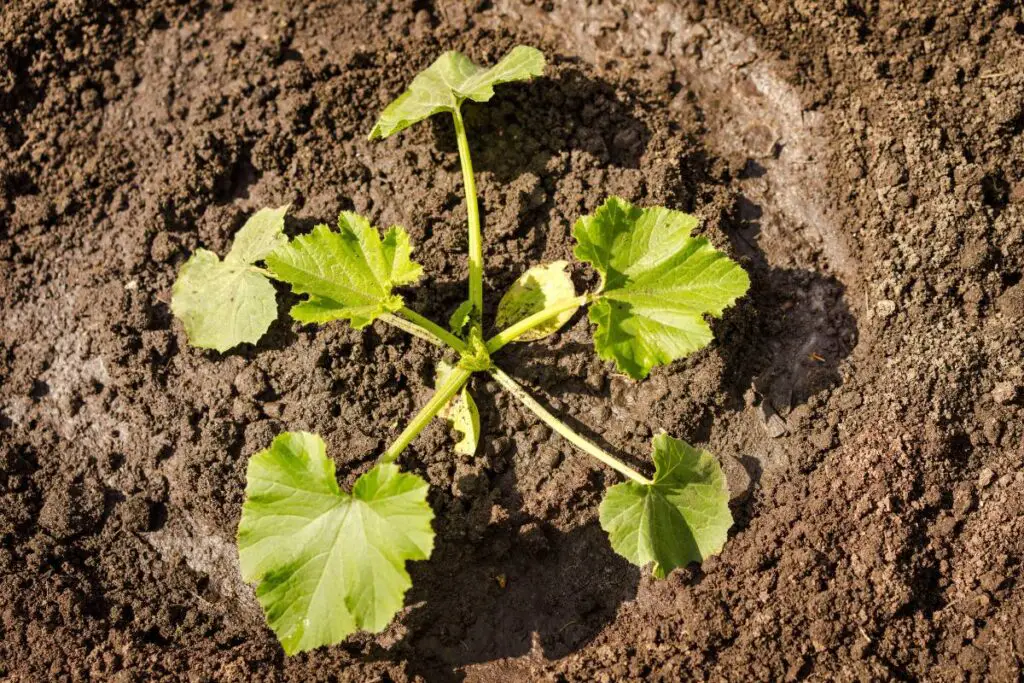
As a general rule, you need to apply 1 to 2 inches of water to the Zucchini plants every week.
But this can change based on various factors.
That is why the proper watering balance is essential to keep the plant healthy and well-maintained.
Like other plants, Zucchini plants also prefer deep and infrequent watering.
This means that you need to provide enough water to soak the soil so that the moisture reaches the roots.
It will keep the soil wet for a very long time, thus stopping you from repeated or over-watering.
For this, you need to use enough water to moisten the soil at a depth of around 6 to 8 inches.
It is easier to understand the potted plants. When the excess starts draining, you should stop watering.
But it is challenging for grounded plants to understand whether moisture has reached the roots.
So, a good rule is to use 1-2 gallons of water per square foot of your Zucchini bed.
I have a 10-foot by 10-foot garden bed for my Zucchini plants.
I use between 100 and 200 gallons of water for each square foot during each watering session.
I increase or decrease based on the plant’s requirements and weather conditions.
For more precise information, you need to perform an infiltration test and inspect the water of water loss due to transpiration and evaporation.
The rate of transpiration and evaporation depends on the weather type.
As for the infiltration test, fill a cup or jar with the sample soil of your garden, pour water, and check how long the soil takes to absorb the water thoroughly.
The longer the time, the more water your soil can handle.
Assessing soil moisture
Clay soil has a high water-holding capacity.
Moisture retains for a long time and sometimes stays still due to the compactness of the soil.
In such a condition, maintain infrequent watering to avoid overwatering and root rot.
However, the compactness of the soil can hinder root growth.
In that case, add sand or compost to improve the drainage.
Sandy soil has poor retention qualities.
It cannot hold water for too long.
Poor retention also makes the plant suffer from nutrient deficiency as the nutrients get drained faster with the water, leading to nutrient deficiency.
For sandy soil, you need to water the Zucchini plants more often.
To improve the drainage, add compost.
Loamy soil is a perfect mixture of clay, sand, and organic matter.
The soil retains enough moisture and drains the excess.
So here, you can maintain a fixed watering routine.
To assess and monitor the moisture levels in the soil, you need to check it with your fingers.
The soil type no doubt helps you keep the moisture levels in check, but manual checking produces better confirmation.
Insert your finger 1-2 inches deep into the soil.
If the top few inches feel dry, you can water the soil.
Otherwise, wait for a few more days.
The soil’s top few inches should stay dry, but the bottom 3 to 4 inches must be slightly moist.
Do not let the whole soil dry out.
That will dry out the roots too, and the plant will suffer from dehydration.
A fluctuation in moisture levels can stress the plant and weaken its growth.
So, keep checking the moisture level regularly and water whenever the top 1-2 inches feel dry.
The watering equation
While watering the Zucchini plants with 1 inch of water every 1-2 weeks is the primary watering care, there are some factors to consider.
These factors can affect the watering amount and frequency of the Zucchini plants.
Soil type
Different types of soil will have different retention and drainage qualities.
Based on the retention quality, you need to adjust the watering needs for the Zucchini plants.
Clay soil has poor drainage qualities, and sandy soil has poor retention qualities.
For clay soil, reduce the watering frequency.
For sandy soil, increase the frequency.
However, adding compost to both soil types can improve the soil quality.
After that, you can maintain a proper watering schedule.
It is better to check the soil’s moisture level before every watering.
Loamy soil, on the contrary, is the best type of soil for all plants.
It has a perfect mixture of clay, sand, and organic matter, which helps appropriately retain and drain.
If you have this soil type, you do not have to struggle with a watering regimen.
Climate, temperature, and humidity
The climate also has a very high impact on the watering frequency.
The Zucchinis will demand more watering during hot and dry conditions and less water during cool, wet, and humid weather.
If you live in arid and tropical climates, the Zucchinis will require more water than the mediterranean and subtropical climates.
During the hot and dry temperatures, the water can dry out faster and evaporate.
That is why the water requirements are higher.
The same applies to hot tropical climates.
Even windy weather can evaporate the moisture from the soil and increase the watering needs of the Zucchinis.
When the humidity is high, the soil takes time to dry out the soil.
So here, the water demand reduces during a cool and humid climate.
The water requirement also reduces during rainfall.
Even if you do not water the plant for a week or two, the rain will take care of it.
Sunlight
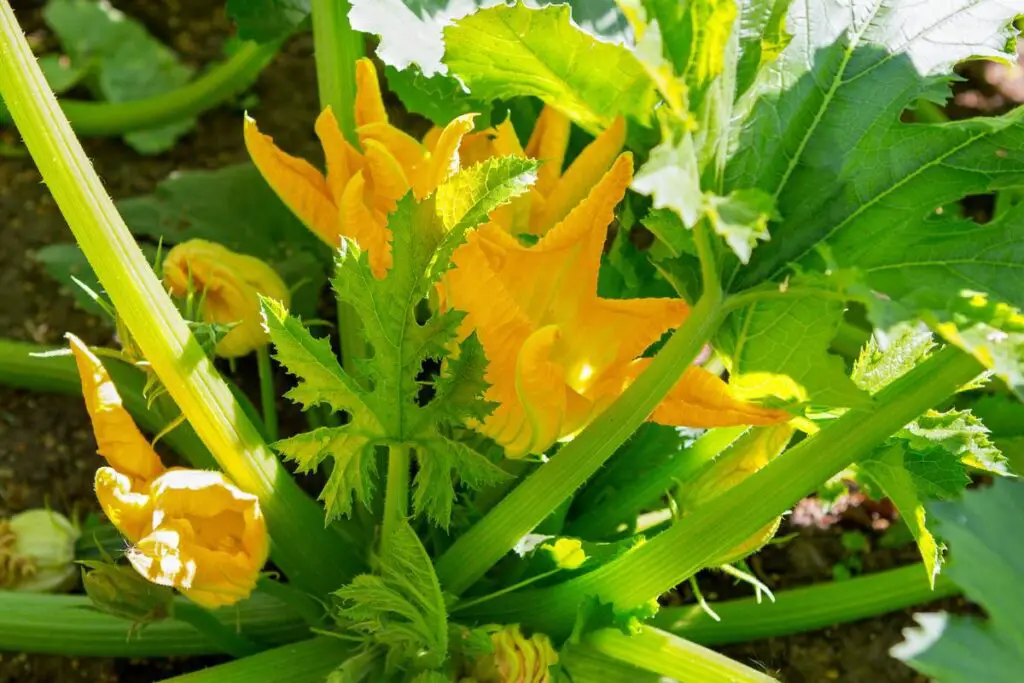
Zucchinis are sun-loving plants.
They grow best when they receive 6 to 8 hours of direct sunlight.
The more sunlight the plants receive, the faster the soil can dry out.
It increases the plant’s need for watering.
Plants growing under the full sun require more water than those under partial sunlight.
Full sun increases the rate of evaporation on the soil surface.
Moreover, excessive direct sunlight can increase the heat buildup around the plant’s roots.
So the plant will require more moisture to stay moist, hydrated, and cool.
Looking for gardening supplies? We have tested 100's of products before recommending them to you guys. Check out our best pick below:
| Image | Gardening Supplies | Best Price? |
|---|---|---|
 Top
Top Top
Top | Raised Garden Bed Kit | Check On Amazon |
 | XLUX Soil Moisture Meter, Plant Water Monitor, Soil Hygrometer Sensor for Gardening, Farming, Indoor and Outdoor Plants, No Batteries Required | No Results |
 Top
Top Top
Top | 82 Pcs Garden Tools Set and Extra Succulent Tools Set | Check On Amazon |
 | Joeys Garden Expandable Garden Hose with 8 Function Hose Nozzle, Lightweight Anti-Kink Flexible Garden Hoses, Extra Strength Fabric with Double Latex Core, (50 FT, Black) | No Results |
 Top
Top Top
Top | Dual Chamber Compost Tumbler | Check On Amazon |
 Top
Top Top
Top | Sunnyglade Plant Stakes | Check On Amazon |
 Top
Top Top
Top | Organic Cold Pressed Neem Seed Oil | Check On Amazon |
 Top
Top Top
Top | Mighty Mint Gallon :-Insect and Pest Control Peppermint Oil | Check On Amazon |
 Top
Top Top
Top | Scotts DiseaseEx Lawn Fungicide | Check On Amazon |
 Top
Top Top
Top | Jacks Classic 20-20-20 All Purpose Fertilizer | Check On Amazon |
 Top
Top Top
Top | 30,000 Seeds Pollinator Attracting Wildflower Mixture | Check On Amazon |
 Top
Top Top
Top | Survival Vegetable Seeds Garden Kit-Over 16,000 Seeds | Check On Amazon |
Timing is the key
Timing is one of the most vital factors for successful plant growth and development.
You must know when to water the plant with the correct frequency and amount at different growth stages.
The best time to water the Zucchini plants depends on factors like your region’s temperature and the type of irrigation you use.
The ideal time to water the Zucchini plants is early morning when the weather is still cool.
It will allow the plant to absorb the maximum amount of water without any chances of evaporation or transpiration.
Moreover, watering in the early morning gives time to let the water dry out before the sun sets.
This further reduces the chances of fungal diseases.
Make sure to water the plant slowly, steadily, and deeply so the moisture reaches deep into the root system.
If you live in a hot area, you have water more than once per day.
If the first watering is in the early morning, the next watering should be in the early evening.
This will keep the plant hydrated the whole day and allow the leaves to dry before sunset.
If you use a sprinkler system, adjust the watering time in the morning.
Modern sprinklers have a timer that allows you to set the timing to water the plants.
When the time comes, the sprinkler will start automatically.
It assures your plant gets the right amount of water at the right time without manual effort.
Watering practices at different growth stages
As for the different growth stages, the watering needs might be slightly different.
Water is enough to moisten the soil when you plant seeds.
There is no schedule for this.
You need to keep checking the soil and ensure a moist soil until the seeds germinate.
The young Zucchinis will thrive if the other requirements are provided correctly.
So, water these plants more often to help them grow and produce fruits.
Let’s have a quick look at the watering needs for Zucchini at their different growth stages:
Seedlings
Try to keep the soil consistently moist but not wet.
Water the seedlings slowly and avoid making pools of water around them.
It will cause overwatering and kill the plants at the young stage.
Early growth stage
Consistently moist soil is for all the growth stages.
Since the plants are young and will grow faster, they require more water.
Younger plants are hungry and will use water faster to produce vegetation, fruits, and flowers.
Water Zucchinis in the early morning so the foliage can dry throughout the day and before evening to reduce the risk of fungal diseases.
Flowering and fruit development
At this time, the plant will need more water to produce flowers and fresh juicy fruits.
Usually, the plant requires 1 inch of water regularly every week.
At this time, increase it to 1-2 inches per week.
Increase watering during the hot and dry weather and reduce it during rain.
Also, reduce in the winter because the soil will take time to dry out.
Late season
When the Zucchini plants reach the end of the growing season, you must reduce the watering and prepare the plant for harvest.
Overwatering vs. Underwatering
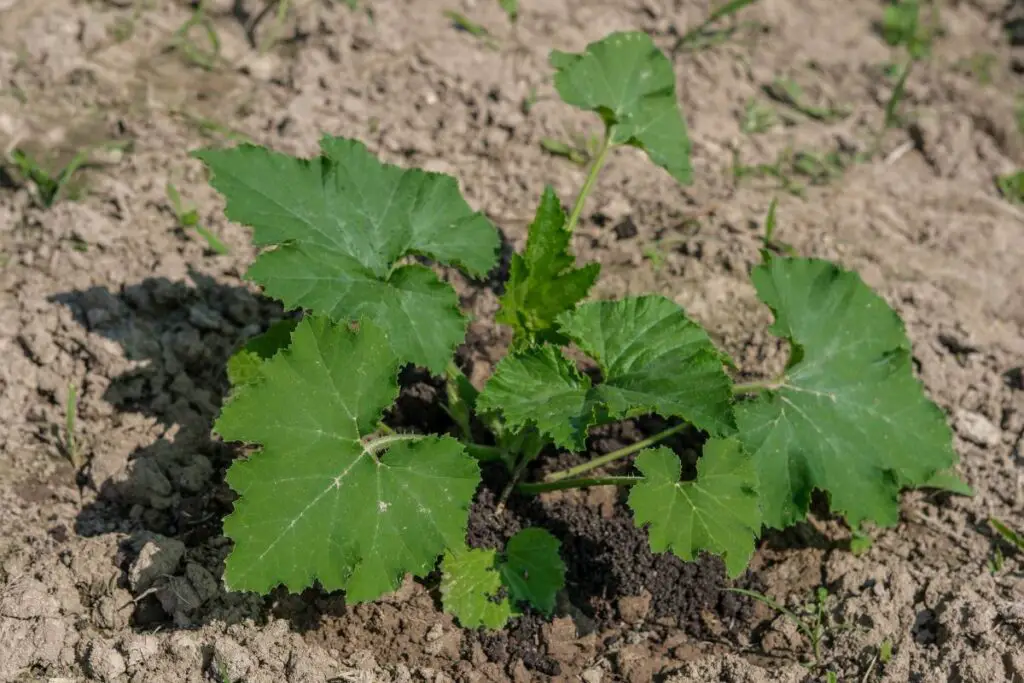
When you provide water to the Zucchini plants, monitoring them regularly for signs of overwatering and underwatering is crucial.
Overwatering
Some common signs of overwatering are:
- Yellow leaves
- Wet soil
- Mushy and slimy roots
- Fungi growth on the soil surface
- Root rot
When the excess water cannot drain out and remains stagnant around the roots, the soil will stay wet for too long.
The roots will suffocate, fail to breathe, and transfer the nutrients and moisture to other parts of the plant.
As a result, the leaves will become yellow, and the plant will grow slowly.
Over time, the roots will start rotting due to the stagnant water, and fungus will start growing around the soil surface, leading to root rot.
While a plant with root rot can be revived, plant death is more likely.
So, prevent reaching that level by taking immediate steps whenever you see the initial overwatering symptoms.
Here are some remedies for Zucchinis suffering from overwatering:
- Always check the soil’s moisture level before you water the plant. Only water the plant if the top few inches have dried out. If the top few inches are still wet, wait a few more days to let the soil dry.
- If the soil is the problem, for example, clayey and compact soil, you need to add compost to the soil to improve drainage.
- Regular watering for plants under low light can also lead to overwatering as the soil takes a long time to dry out. Remember that the Zucchini plants will require at least 6 to 8 hours to grow well. So, please find out the reason for low light and improve the light conditions to help your plant live long.
- Remove the completely discolored leaves from the plant so that it can focus on the plant’s revival and new leaf growth after it returns healthy.
Underwatering
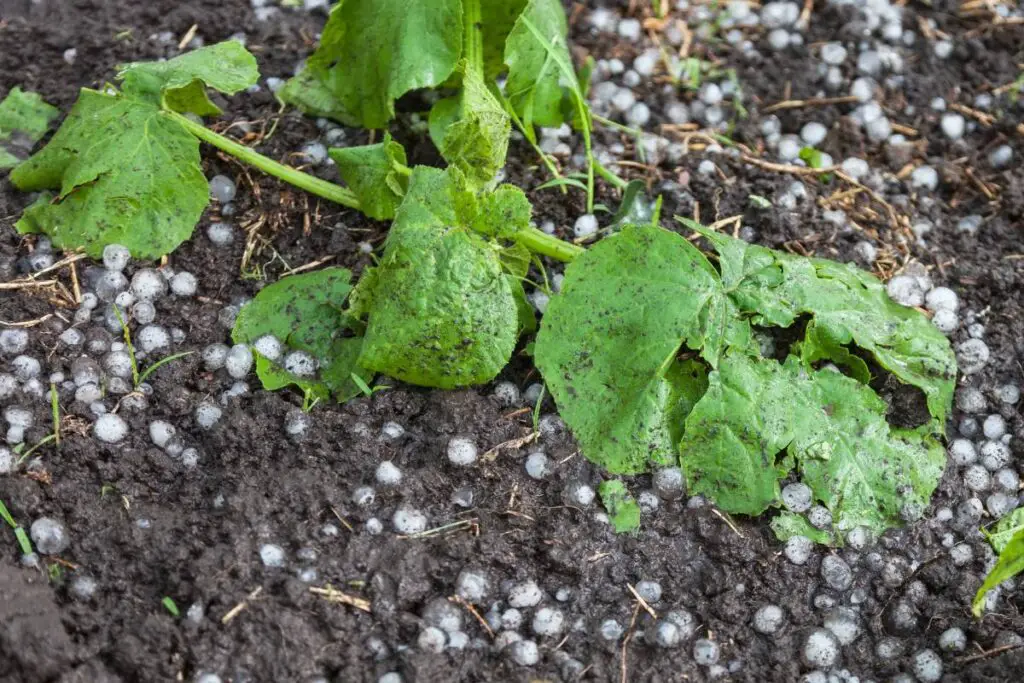
Common symptoms of underwatering are:
- Wilted and dry leaves
- Dry and hard soil
- Stunted growth
- Poor fruit quality
For successful growth and higher yields, Zucchinis will need adequate water.
When a plant often suffers from underwatering, it affects and interrupts its overall development, causing the plant to have stunted growth and poor fruit quality.
Additionally, the leaves become wilted and dry.
The soil gets dry, hard, and compact, which hinders the plant’s root growth, leading to poor development.
Wilted leaves are one of the initial signs of underwatering in the Zucchini plants.
Check the soil’s moisture level and water the plant when you see wilted leaves.
Ensure to soak the soil well so that the moisture reaches the roots and every part of the plant.
Zucchinis prefer deep and infrequent watering.
Water conservation strategies
Dumping lots of water in the Zucchini bed is not the right way to water the plant.
It only creates a pool of water around the plant base.
This hinders plant growth and also leads to water wastage.
So what will you do for efficient water usage in the Zucchini plants?
Here is what I do:
Mulching
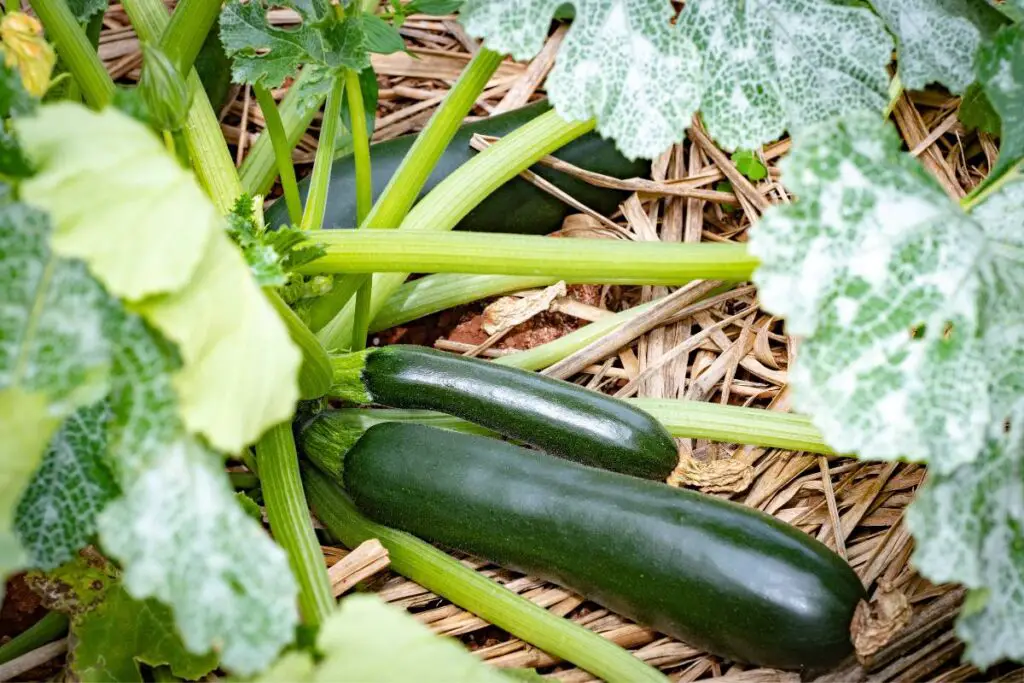
Mulching is one of the most effective ways to hydrate the plant and avoid water wastage.
When you apply a thick layer of mulch, around 1-2 inches, it traps the moisture in the soil and reduces the rate of evaporation and transpiration.
With mulching, you can keep the plant hydrated and consider infrequent watering.
Add mulch when the weather is scorching and dry.
The chances of soil getting dry increase during such a climate.
Mulching is sometimes used in the winter too.
At that time, too, you can keep the moisture from evaporating due to the dry weather.
It also stops the cold weather from reaching the roots and harming them.
Zucchinis are sensitive to cold.
Drip irrigation
In drip irrigation, you water the plant at the avoid ground level and avoid overhead watering.
With overhead watering, the chances of evaporation get faster.
As a result, the water gets wasted and not utilized.
With drip irrigation, the water you provide reaches deep into the roots, which ensures efficient water usage.
Water the plant slowly
Instead of simply dumping a lot of water, water the plant slowly and steadily.
This ensures the water reaches deep into the roots and is appropriately utilized.
Slowly trickle the water over the root zone for several minutes instead of using a high-pressure hose or sprinkler system and blasting the area with a lot of water.
Monitor the soil moisture
Do not follow any strict routine throughout the year.
At different times, the plant will require different watering frequencies.
For example, I water my Zucchini plants twice per week during the summer.
This routine does not apply during monsoon and winter.
In the monsoon, the rains will take care of the watering.
So, I sometimes skip watering.
In the winter, the soil takes time to dry out since the weather is cool and the sunlight intensity is low.
Here also, I reduce the watering frequency.
Monitoring the soil moisture and adjusting accordingly allows the plant to use the moisture efficiently and also conserve water.
Use the correct type of soil
Growing Zucchinis in sandy soil will increase the water demand.
Sandy soils have an inferior retention quality.
Not only does the plant suffer from dehydration, but also from lack of nutrition.
Along with the moisture, the nutrients get drained before the plant can properly absorb them.
When you use sandy soil, you need to give too much water to the plants.
Even after this, there is no guarantee that the plant will be able to absorb moisture and nutrients.
The water gets wasted.
So, use loamy soil.
It can drain the excess moisture and retain the required moisture to keep the plant healthy and hydrated.
This way, you can conserve water and let the plants use the moisture efficiently.
Rainwater and irrigation options
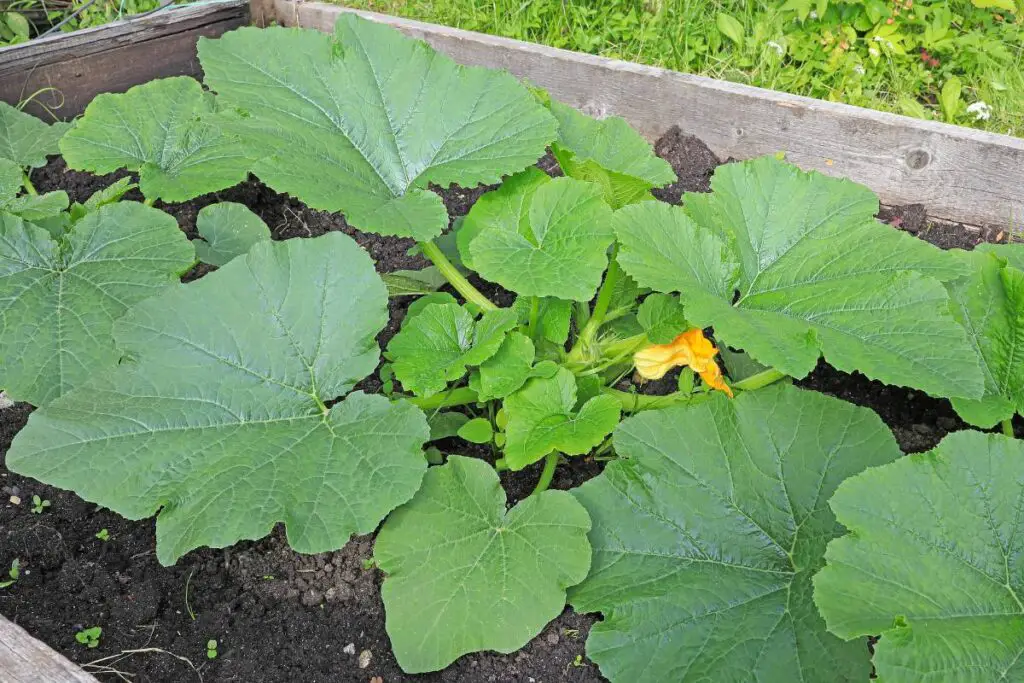
There are several methods to irrigate the Zucchini plants.
Here are some ideal methods that I follow to water my Zucchini plants:
Drip irrigation
Drip irrigation is one of the best methods to water the Zucchini plants.
Drip irrigation ensures the plant’s hydration, healthy growth and development, and water conservation.
The moisture reaches the plant’s root system efficiently and effectively in drip irrigation.
So, you do not have to worry about overwatering or underwatering.
You also do not have to spend too much time assessing the soil’s moisture levels and regularly checking the plant for watering.
To install a drip irrigation system, determine the system’s layout, i.e., the drip emitter’s placement, the length of the dripline, and the container size that will hold the water.
You must select a suitable type of drip irrigation to use.
Various options are available, like above-ground, in-ground, and time control.
The installation involves digging trenches, laying the dripline, and connecting the emitters to the water source.
Ensure the system is installed correctly, as any mistake will lead to water loss. So, get it done by experts.
Soaker hose
Many people dump a bucket or a mug of water around the plant.
But there are better ways than that.
Watering with a soaker hose encourages a slow and direct moisture delivery to the soil and the roots.
This further reduces the water waste, doesn’t moist the leaves, and prevents fungal diseases.
Avoid using high-speed water hoses.
That is similar to dumping lots of water.
Hand watering
If you do not have a soaker hose or drip irrigation facilities, buy a watering can and water the plant manually.
There are several types of watering cans available.
I suggest one with a thin mouth.
This pours the water slowly and steadily without dumping.
Slowly pour the water into the soil until it gets appropriately moist.
It ensures moisture reaches the plant’s roots without any wastage and avoids splashing water on the leaves, preventing fungal diseases.
Choosing the right type of water for Zucchini plants
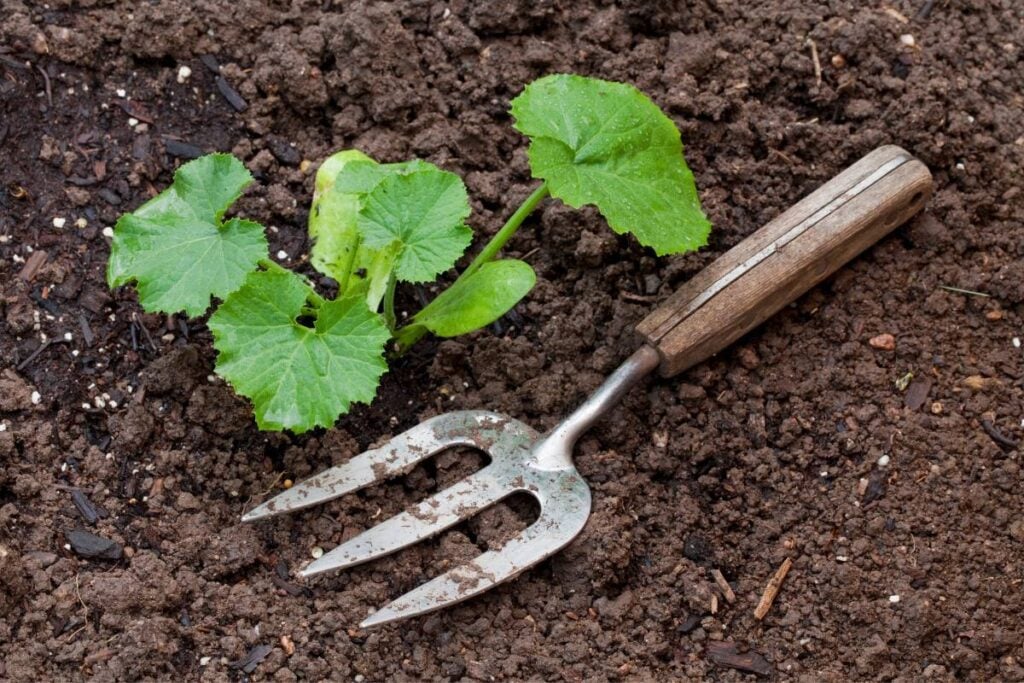
Along with the watering schedules, timings, and methods, the type of water is equally important.
The best type of water should have a neutral pH between 6.0 and 7.0.
It ensures that the plant receives adequate hydration without getting any harsh minerals.
Tap water contains chlorine, calcium, and magnesium, which can create a buildup in the soil surface and make the plant difficult to absorb nutrients and moisture.
You can filter the water and use it.
But you must also check the pH before watering.
Avoid using water softener as it has a high concentration of sodium, which makes the soil excessively saline for the plants.
If the filtered tap water does not have a neutral pH, adjust it by adding lime or sulfur.
For every 3 gallons of water, add 1 teaspoon of lime or sulfur.
This will raise or lower the pH ideal for the Zucchinis.
If you use well water, get the pH checked.
Water’s pH levels vary based on region and may not be suitable for Zucchinis.
Another great choice is rainwater.
But be careful about the container type you use to gather the rainwater.
The rainwater has to be free from toxins.
So, you cannot gather water from the rooftops or water exposed to air pollution.
Final thoughts
Zucchinis are not only sun-loving but also moisture-loving plants. Provide enough moisture to keep the plant healthy and hydrated and encourage flowers and fruits. The soil should remain consistently moist throughout the growing season. Generally, Zucchinis will need 1-2 inches of water per week. But you do not need to follow this routine strictly all the time.
Several factors can affect the watering frequency and amount, for example, weather, temperature, soil type, and sunlight. You have to adjust the watering accordingly. For example, water the plant more often during hot and dry weather but less during cold and rainy seasons. The best way to maintain a perfect moisture level is to check the soil and water the plant whenever the top few inches have dried.
Both overwatering and underwatering can be detrimental to the plant. So consistent moisture level is the key. Water the Zucchinis thoroughly and infrequently. Use filtered tap water or water with a neutral pH level for the best results.
How often should I water my Zucchini plants?
You can water the plant once a week. But it will vary based on climate, soil type, amount of sunlight it receives, and the plant’s growth stage. The best way is to water the plant whenever the top few inches have dried.
Should I water my Zucchini plants from the top or bottom?
Always water the plant close to the bottom. It ensures that water reaches the root system. While watering the leaves might be okay, it can lead to fungal diseases if the leaves do not dry out. So, bottom watering is the best choice.
Reference: Zucchini Wikipedia
